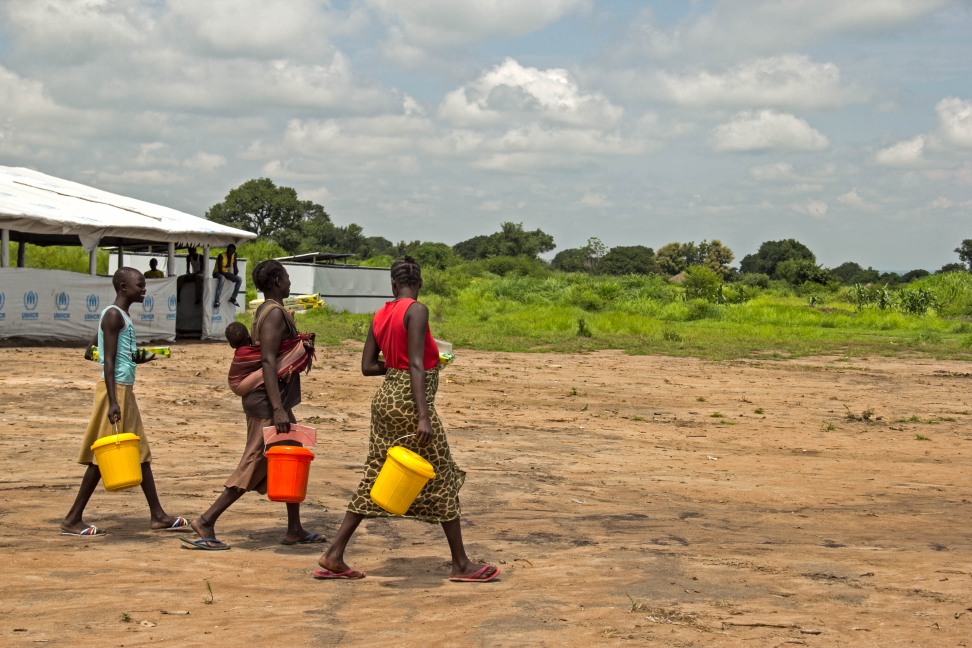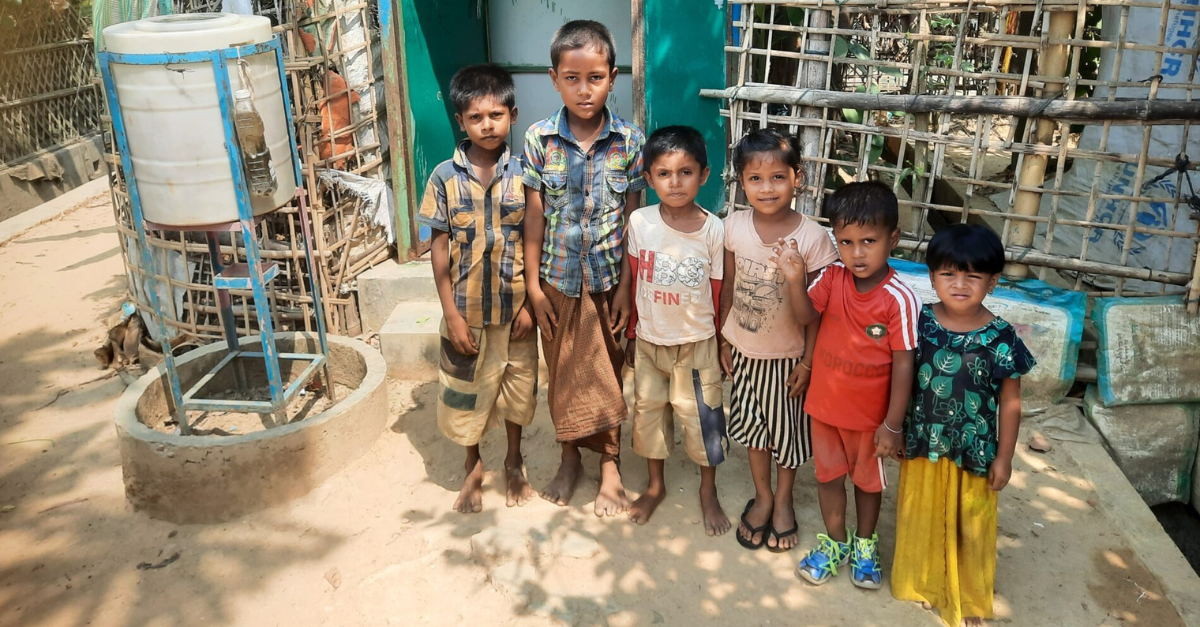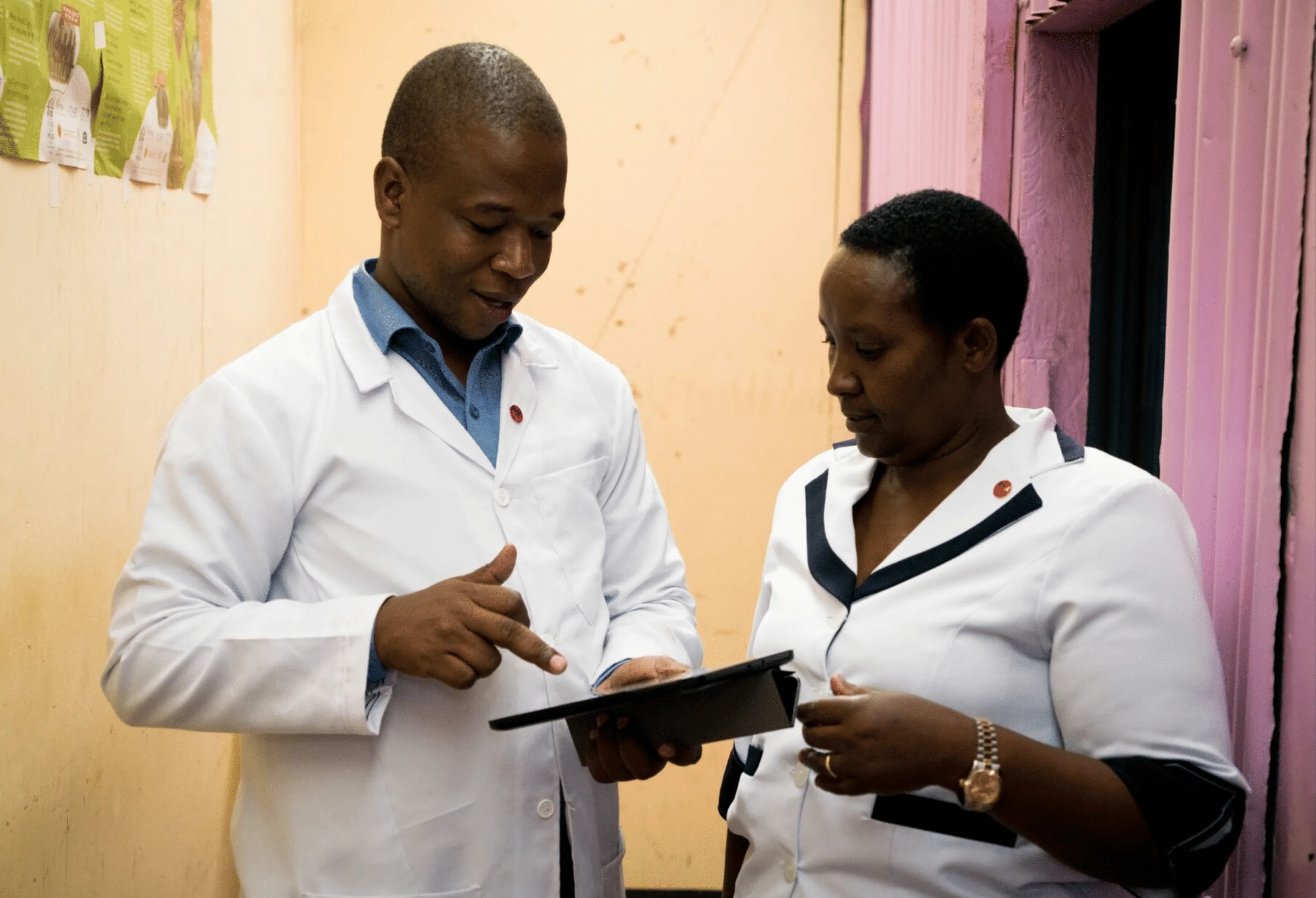Television and Ebola

Television and Ebola. How televisions can change disease perception &; reduce stigma
by Sonya de Laat
Circulating around the globe during the 2014-15 Ebola outbreak in West Africa were bold and sensationalistic headlines such as “Killer Virus”, “Ebola Here!” and “Burn dead bodies.”[1] Along with such stark and shocking headlines were images of health providers sealed (concealed) within personal protective equipment (PPE), people following in the footsteps of every suspected case sparying disinfectant, and sick, suffering or dead bodies splayed out in public or whisked off in the most degrading manner as a sense of panic and hysteria overrode social conventions. Sensationalistic statements and visual provocations coming from TV and other media filled people with dread and played on people’s anxieties of a disease with dramatic symptoms, with high death rates, and certainly no cure. Given these impressions—ones that linger in the mind long after the crisis has passed and ones that conjure up everything else dreadful and horrific—it is hard to consider Ebola Virus Disease (EVD) as anything other than exotic, unique and unstoppable.
When the disease first began to spread in and then beyond Guinea it certainly felt unstoppable. A neglected yet cyclical disease, when it reached urban centres, Guinea’s chronically underfunded health system had minimal protection measures and treatment options to manage the outbreak. Though described as a fragile virus—needing moisture and contact to spread—spread it did, and with violent force (Frieden 2014).[2] Many hospitals and Ebola Treatment Centres (ETC) reported early on a more than 60% mortality rate (WHO). The visually disturbing symptoms that people had at late stages of the disease, and the reality that the majority of people entering health centres were not coming out alive or at all (because people were going to ETCs at advanced stages of the disease and since customary funeral and burial practices were being stopped as a public health measure), understandably contributed to fear and generalized anxiety.
The Humanitarian Health Ethics research group’s R2HC-funded project “Aid When There is ‘Nothing Left to Offer’” included a case study that explored experiences of palliative care during the 2014-15 Ebola outbreak in Guinea. Through in-depth interviews with healthcare providers, survivors, and psychosocial &; spiritual supporters we learned a great deal about the lived experience of the disease. Unsurprisingly, participants described scenes that contributed to their fears, for instance: “Every day they brought in the sick and they were dying. We could see them coming in sick and coming out dead. Everyday” (Participant 5). We also heard of remarkable—but decidedly ‘normal’ (as opposed to dramatic and sensationalistic)— ways in which patients healed. Our aim in sharing some of these latter stories of everyday interventions that helped people get better, is to support the dispelling of myths and to reduce stigma around Ebola Virus Disease more broadly.
Given the extreme and sensationalistic impressions fueled in the press and by rumours, one might naturally think that many entering ETC red zones (for treatment of those with confirmed EVD) especially in the early days of the epidemic would pass their hours tormented by fear, by thoughts of their own and loved one's death, and/or the painful desire to live with knowledge that risks of dying were high. Certainly, such preoccupation dominated the fields of visions of time spent in the ETC evoked by many of the survivors we interviewed. Yet, in the same breath, survivors also talked of the invaluable importance of all that opened and held some distance between them and despair. Even those people who felt at one point that there was nothing to do but to wait and die talked of the immeasurable value of human presence and technological distractions. The human dimension is an integral aspect of palliative care, and certainly appeared in the narratives we gathered, for instance, holding hands: even through a PPE, even though the human inside was not recognizable other than by their nametag or by the patient coming to recognize the PPE wearer’s voice. Less obvious were some of the other material interventions that provided comfort to patients, such as the glory of water to bathe and clean oneself of sweat, vomit and diarrhea:
“On the third day of our admission, they put in water [buckets], first. And when they put in the water [shower], I started washing so much; I was happy to see water. I am, I sat under the pump, from 12 o'clock to 6pm I was under the pump. But when I got there I had caught cold. And then, vomiting, it did not stop.” GPALL02
Perhaps most unexpected was talk of technological comforts, beyond telephones or tablets that were increasingly used in family communication with isolated patients. Indeed, there was a diversionary importance of having a radio, or better yet, a TV:
“In terms of recommendations, not only did I tell them [organizations providing medical care] that, first they are good, they did their job, but they had a hard time treating a patient who has Ebola. Because a desperate patient, who thinks that it is useless to continue, not only must we be patient with him, but we must put him in all the necessary conditions—you have to really help him so that he reduces his illness, and to do that, you have to not only, you have to,…give them a TV. So they have installed flat screens there.” GPALL02
Technology such as a television can seem frivolous and unnecessary in a situation as grave as the EVD outbreak was at the time. Yet having a TV or a radio, helped people turn their attention to something other than their misery. With this technology they could see what was going on outside, “what’s going on in Guinea, Conakry” (GPALL02), and be reminded that there is an outside. Talking to someone, holding hands, having showers, listening to the radio and watching TV are among the things, as one participant explained, “that really helped me pass the time, it encouraged me a lot too, to not really give up, and think it was over” (GPALL02).
The dominance of dramatic and shocking stories and images of the horrors of EVD that circulated during the West Africa epidemic and continue to do so to this day does reflect at least in part the severity of the situation. Such (visual) narratives have their value; they warrant being shared in order to raise awareness and to encourage (international) intervention. But only having those stories, or having them dominate, may also cause unintended harm. These can, for example, undermine public health efforts aimed at encouraging rapid reporting and health seeking for EVD symptoms, if fear of the disease and its associated stigmas is high. Such narratives also leave unacknowledged so much about how healing and caring in ETCs transpired. Eventually, as the West Africa epidemic came under increasing control in 2015, more and more images and stories of survivors emerged. Celebratory and joyous pictures of people leaving the ETCs after being cured of the disease began to circulate the globe. Increased national coordination and contract tracing, well-resourced ETCs, and more uniform effective application of (essentially supportive and palliative care) protocols across ETCs all played important roles in the production of these images and real moments of joy and relief. But, between what for many felt like a 'point of no return' (i.e., dominant thinking upon admission to the hospital with an Ebola diagnosis) to those moments/images also lie human and technological exchange, connection, and distraction. Between infection, fear, sadness and near death and recovery and release from the ETC lie more ordinary salves: talk, telephones, radio, television.
For Westerners, the idea of television-watching while sick is a natural occurrence; it acts as a comforting soporiphic to distract and distance onself from symptoms. TV has been recognized for its therapeutic effects and are a standard accessory in many North American hospitals (though poised to be replaced by tablets and smartphones) (Fuqua 2012). Few Westerners would think of this technology as important for Guineans—who already live with so few amenities—especially when struggling through so extreme a disease as Ebola. Thus, it is in two ways that TVs are significant to the potential to change disease perception and the potential to reduce stigma. First, on the part of people who might personally experience the disease, to be exposed to stories of Ebola being experienced, fought and survived like other viral diseases with rest, companionship and TV can help reduce people’s anxieties about seeking treatment. Such stories that normalize the disease and its treatment (however much it continues to be researched and tested) can contribute to people seeking care when symptoms are less severe. Second, on the part of Westerners who might have assumptions to overcome about suffering and illness experiences in the ‘third world,’ such narratives can support an array of international humanitarian health interventions that include everyday, distractive technologies.
Arguably, for a variety of historically discriminatory reasons, Ebola has been a neglected disease until its reach extended into high resource places of privilege. That the disease spread as it did in 2014-15 is a consequence of Guinea’s precarious health system, a system weakened by global structures of inequality that led to a relatively recent civil war and a slow post-conflict recovery/rebuild period. Our research on the lived expriences of Ebola is a modest contribution in addressing these wrongs and overcoming inequities by prioritizing the perspectives of those directly affected. In sharing these stories of ways in which people healed[3] from Ebola we hope to help reduce myths, anxiety and stigma around the disease to improve prevention and treatment seeking behaviours, and clinical research interest.
References:
Frieden, Tom. (2014). “Ebola: Environmental infection control guidance.” Perspective: CDC Expert Commentary. Medscapes. 12 December. https://www.medscape.com/viewarticle/831612
Fuqua, Joy V. (2012). Prescription TV: Therapeutic Discourse in the Hospital and at Home. Duke University Press.
World Health Organization. (2015). "Ebola Situation report". 12 January. https://www.who.int/csr/disease/ebola/situation-reports/archive/en/
;
[1]http://money.cnn.com/2014/10/24/media/nyc-ebola-headlines/index.html and https://www.ncbi.nlm.nih.gov/pmc/articles/PMC5094248/ and Am J Trop Med Hyg. 2016 Nov 2; 95(5): 988–992. doi: 10.4269/ajtmh.16-0245 PMCID: PMC5094248 PMID: 27458038; and An Outbreak of Fearsome Photos and Headlines: Ebola and Local Newspapers in West Africa Eric S. Halsey.
[2] http://www.doctorswithoutborders.ca/issues/ebola-facing-against-deadly-virus
[3] Of course, narratives and images of care given to the bodies of those who die (e.g., culturally appropriate burial practices, though modified for public health &; safety) are also needed to help reduce anxieties, rumours and stigma.
Stay updated
Sign up for our newsletter to receive regular updates on resources, news, and insights like this. Don’t miss out on important information that can help you stay informed and engaged.
Related articles



Explore Elrha
Learn more about our mission, the organisations we support, and the resources we provide to drive research and innovation in humanitarian response.